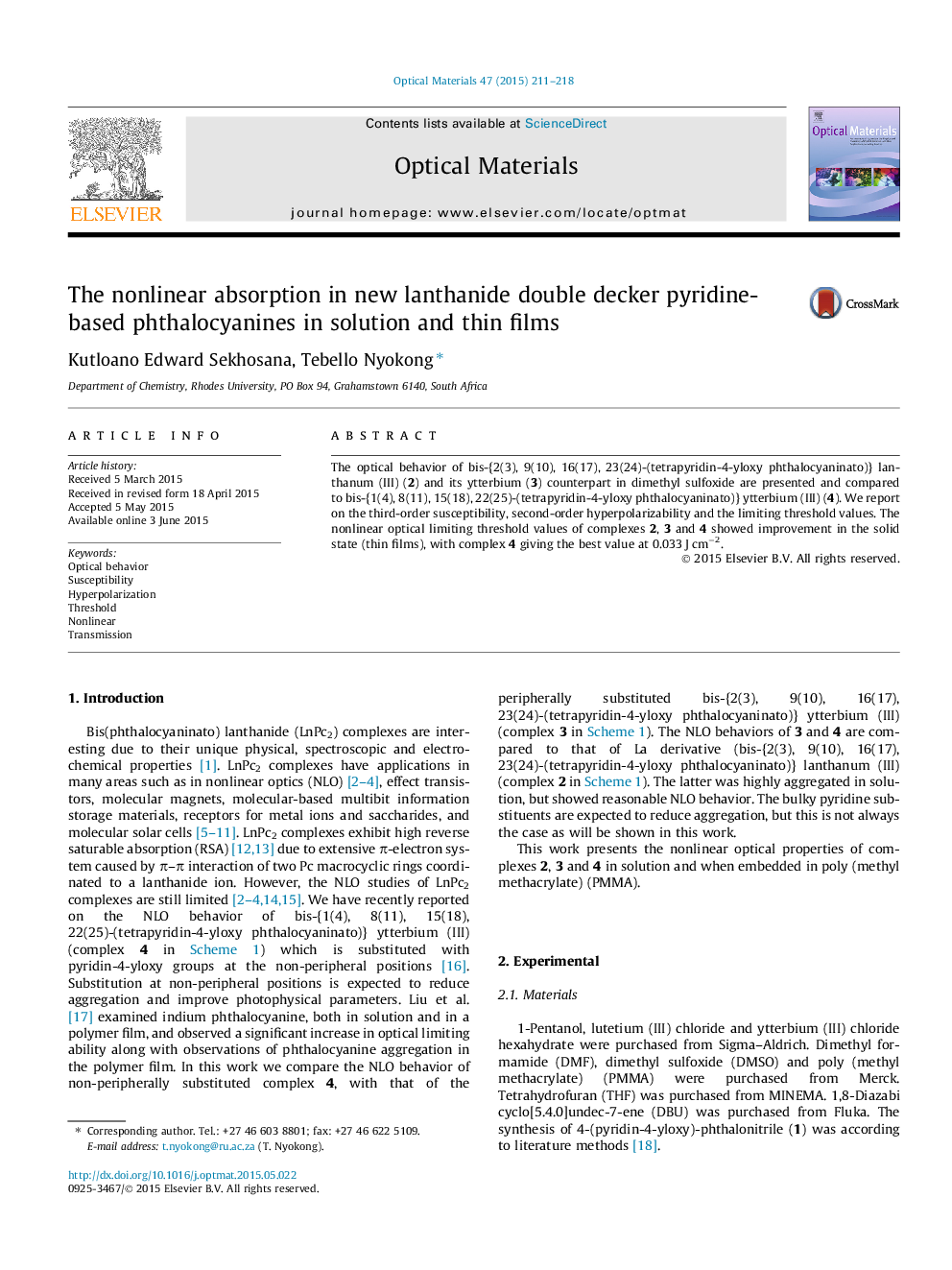| Article ID | Journal | Published Year | Pages | File Type |
|---|---|---|---|---|
| 1493703 | Optical Materials | 2015 | 8 Pages |
•The nonlinear optical behavior of lanthanum (III) and ytterbium (tetrapyridin-4-yloxy) bis phthalocyanines are presented.•The limiting threshold values for the complexes were improvement in the solid state compared to solution.•The non-peripherally substituted ytterbium derivative gave the best limiting threshold value.
The optical behavior of bis-{2(3), 9(10), 16(17), 23(24)-(tetrapyridin-4-yloxy phthalocyaninato)} lanthanum (III) (2) and its ytterbium (3) counterpart in dimethyl sulfoxide are presented and compared to bis-{1(4), 8(11), 15(18), 22(25)-(tetrapyridin-4-yloxy phthalocyaninato)} ytterbium (III) (4). We report on the third-order susceptibility, second-order hyperpolarizability and the limiting threshold values. The nonlinear optical limiting threshold values of complexes 2, 3 and 4 showed improvement in the solid state (thin films), with complex 4 giving the best value at 0.033 J cm−2.
Graphical abstractBis-{1(4), 8(11), 15(18), 22(25)-(tetrapyridin-4-yloxy phthalocyaninato)} ytterbium (III) (4) showed improved optical limiting behavior in thin films when compared to bis-{2(3), 9(10), 16(17), 23(24)-(tetrapyridin-4-yloxy phthalocyaninato)} lanthanum (III) (2) and its ytterbium (3) counterpart.Figure optionsDownload full-size imageDownload high-quality image (121 K)Download as PowerPoint slide
